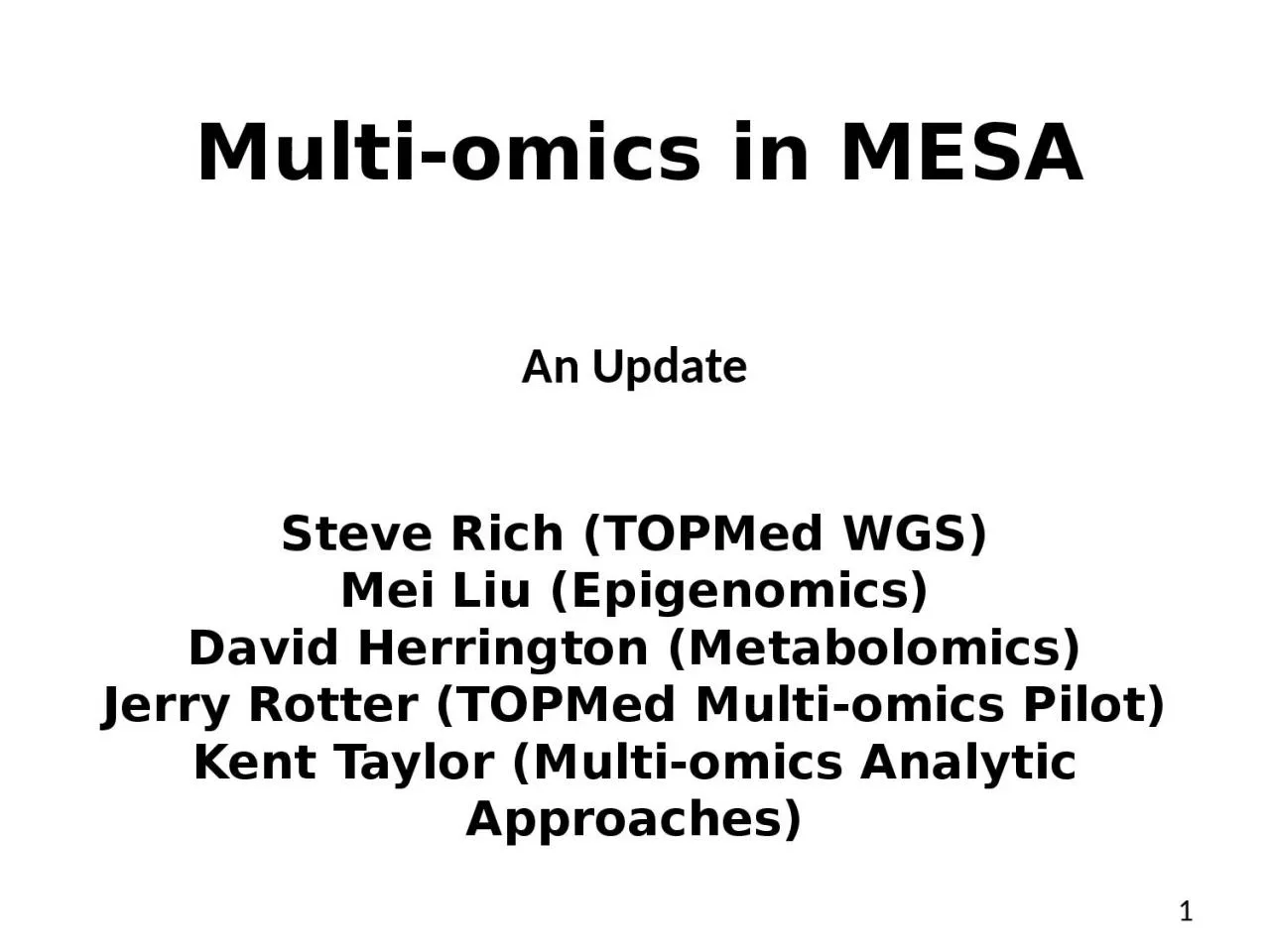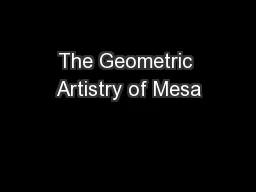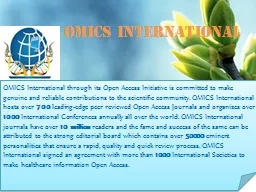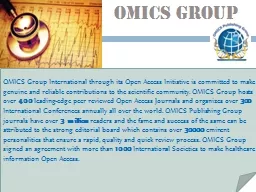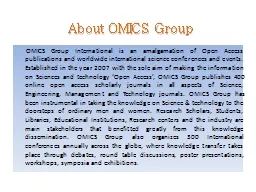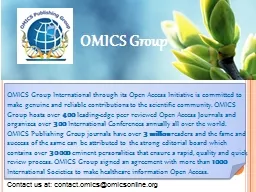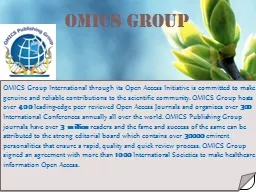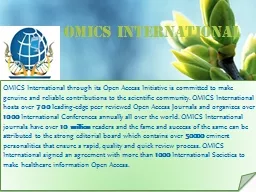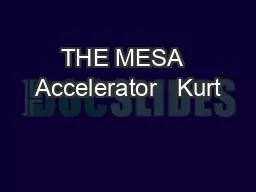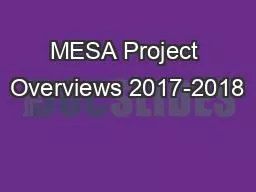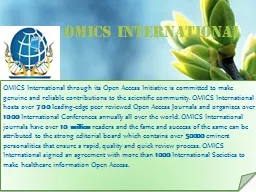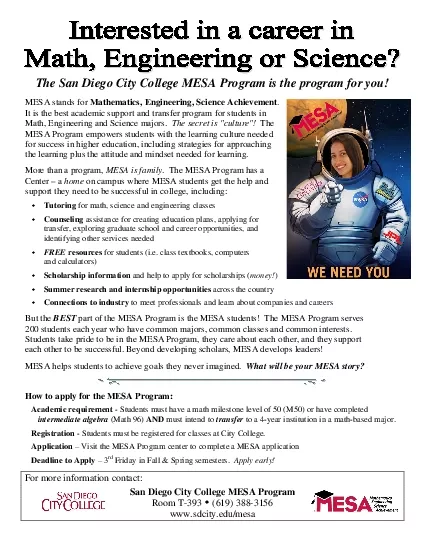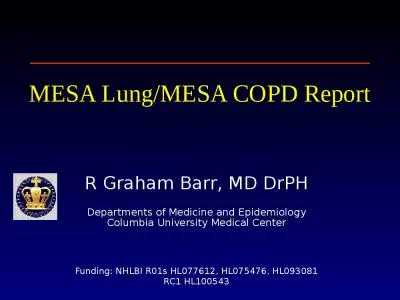PPT-Multi-omics in MESA
Author : nephewhers | Published Date : 2020-08-28
TOPMed WGS Mei Liu Epigenomics David Herrington Metabolomics Jerry Rotter TOPMed Multi omics Pilot Kent Taylor Multi omics Analytic Approaches An Update 1 2 3
Presentation Embed Code
Download Presentation
Download Presentation The PPT/PDF document "Multi-omics in MESA" is the property of its rightful owner. Permission is granted to download and print the materials on this website for personal, non-commercial use only, and to display it on your personal computer provided you do not modify the materials and that you retain all copyright notices contained in the materials. By downloading content from our website, you accept the terms of this agreement.
Multi-omics in MESA: Transcript
Download Rules Of Document
"Multi-omics in MESA"The content belongs to its owner. You may download and print it for personal use, without modification, and keep all copyright notices. By downloading, you agree to these terms.
Related Documents

